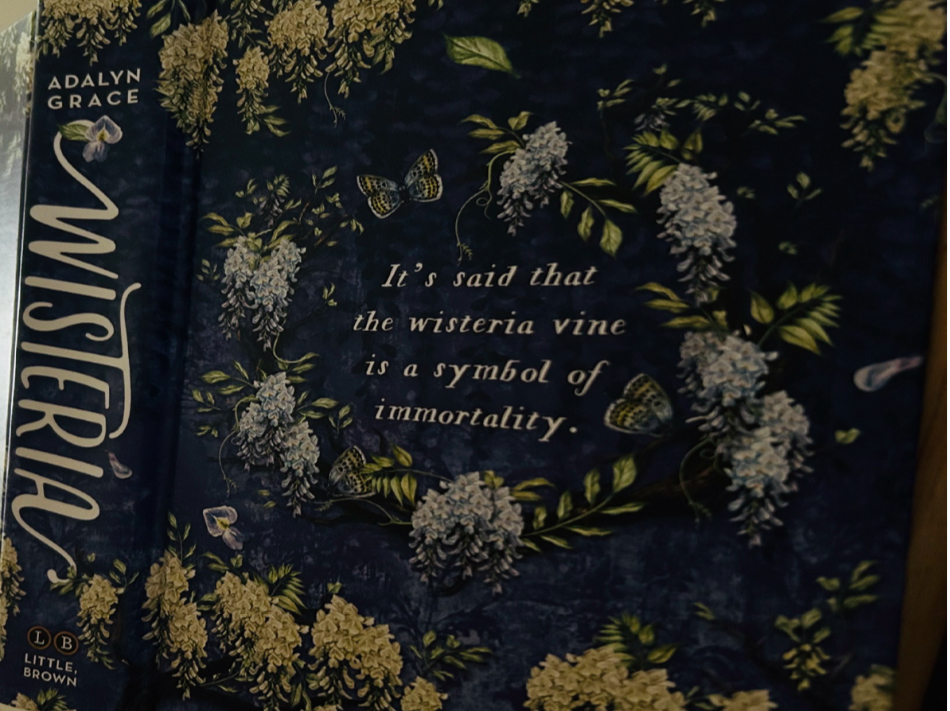Spoilers for Adalyn Grace’s books Belladonna, Foxglove, and Wisteria.
“Wisteria,” the third and final book of Adalyn Grace’s popular series, “Belladonna”, was released August 20, and I am officially in love.
Throughout the previous books of the series, the story followed Signa Farrow and her romantic relationship with an anthropomorphic Death. But with a change of pace, “Wisteria” follows Signa’s cousin Blythe Hawthorn.
I enjoyed “Wisteria” because of how it portrayed the enemies-to-lovers trope in the most intense way possible: full of banter, spite and yearning.
Blythe found herself bound in marriage to Fate, Death’s brother, through a bargain she made in the previous book. The two find themselves trapped in a spiteful marriage.
Blythe has to deal with Fate’s foul mood swings while throwing her own metaphorical punches. When their struggles come to a boil, Blythe finally calls a marital truce. It was the slowest-paced enemies-to-lovers I have ever read, yet it didn’t feel like it was dragging on. “Wisteria” was a work of art.
“Wisteria” also added a hint of mystery to this series. Blythe suffers from visions, where she begins seeing Fate’s first wife, Life. Believing she is being haunted, Blythe tries to uncover what happened to Life and why she is appearing to her. While also suffering from loneliness and solitude as Fate refuses to let Blythe see anyone.

Photo: Alex Green
Even though I loathed Fate’s actions towards Blythe I still couldn’t help but feel sympathy for him. Blyth started the marital war, so it’s somewhat her fault, Fate just happened to have a better arsenal than she does. What can I say, I love a complex man.
What drew me to “Belladonna” in the first place was the gothic atmosphere Grace imposes on readers. What kept me interested through the second book, “Foxglove”, was Signa’s story. And even though I was disappointed that “Wisteria” would not follow Signa, Grace drew me back in with Blythe’s startling personality and actions.
Blythe was as wild as a tornado and as willful as an unruly child. These characteristics are what kept me reading all the way till the end—where I was eventually saddened by the fact that the universe Grace created had come to an end. I wanted to see more of Death and Signa, of Blythe and Fate. I wanted more of the arrant looks she’d give Fate and the laughter she shared with Signa.
In this series it wasn’t just the characters and plot that kept me hooked, it was Grace’s own style of writing. She beautifully described the most peculiar and odd looking things to make them beautiful.
I felt that her plot design was prize-worthy. She kept my mind spinning with possibilities, twists, turns and character relationships. She never left anything to chance or any stone unturned.
I’d be remiss if I didn’t applaud Grace’s world-building. She slowly built a world over the course of three books, and there was never a dull moment. She managed to do what other writers cannot: a subtle sprinkle of world building while weaving in a plot, characters and descriptions.
In the end, “Wisteria” left me more than satisfied. It left me in love with Grace’s style of writing and I wouldn’t hesitate to pick up another one of her books.
